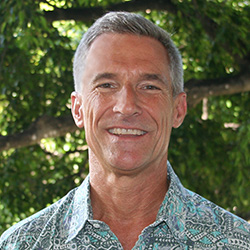SPONSOR:
U.H. College of Tropical Agriculture and Human Resources (CTAHR)
PROJECT PERIOD:
09/01/00 - 03/31/01
ABSTRACT:
CTAHR personnel have prepared a Quality Assurance Plan (QAP) for the U.S. Environmental Protection Agency (EPA) regarding the project "Water Quality Monitoring During the Reconstruction and Aquaculture Operation of Traditional Coastal Fishponds on the Island of Molokai." The QAP describes sampling and analysis plans for several fishponds on Molokai. Approximately 30 sampling stations have been identified and are to be sampled quarterly. Samples are analyzed for a set of parameters established by the Federal Clean Water Act and administered by the Hawaii Department of Health (DOH) in HAR 11-54.
Dr. Babcock has previously worked with CTAHR on Molokai Fishpond Research Initiative including fishpond sampling and analyses over an extended period to characterize water quality for permitting purposes prior to initiation of restoration and operation activities. This project provided training to analytical personnel who have conducted water quality analyses on Molokai in a new laboratory during pond restoration and future aquaculture operations. Analyses for one of the required parameters (chlorophyll) has been performed by UH personnel on Oahu because it is complex, time consuming, and requires specialized equipment not available at the Molokai laboratory.
Goal and Design of Study:
The training activities occured both on Oahu at the Environmental Engineering Laboratory (EEL) at UH as well as on Molokai at the fishponds and at the new water quality laboratory. Initially, the analytical personnel were trained for approximately 2-3 days in the EEL at UH. During this period, the personnel were taught how to perform EPA-approved analyses of the following parameters: pH, conductivity, turbidity, dissolved oxygen, ammonia, total phosphorus, and chlorophyll.
When the laboratory was set up on Molokai, UH personnel made one or more trips to Molokai to provide additional training on site specific equipment and assist in setting up good laboratory procedures. UH personnel were available on an on-going basis to answer questions, check procedures and data, troubleshoot, etc. to assist the Molokai personnel in analytical matters. UH personnel also traveled to Molokai as needed to train water quality sampling personnel. This involved instruction and demonstration at and in one or more of the fishponds.
Analysis of fishpond samples for chlorophyll were performed in the EEL at UH. UH was not involved with sample collection or shipping to Oahu. Samples were collected from the fishponds on Molokai and Molokai personnel performed initial processing (filtration). Molokai personnel filtered samples and immediately froze them. Frozen filters were shipped to the EEL on Oahu by arrangement where the extraction and analyses of the chlorophyll on the filters were performed. Chlorophyll data was transmitted to Molokai and/or CTAHR personnel upon request. Chain-of-custody paperwork was utilized for EPA reporting. UH also conducted limited analyses of other parameters in Molokai water sampled shipped to the EEL for verification or troubleshooting purposes as needed. Other-technical advice was given as requested.
Specific Objectives:
The objectives of this project were to 1) train personnel on Molokai on proper fishpond sample collection techniques, 2) train the personnel on Molokai to perform the required water quality analyses on fishpond samples, and 3) perform analyses of selected parameters on water samples from Molokai.
PRINCIPAL INVESTIGATOR
